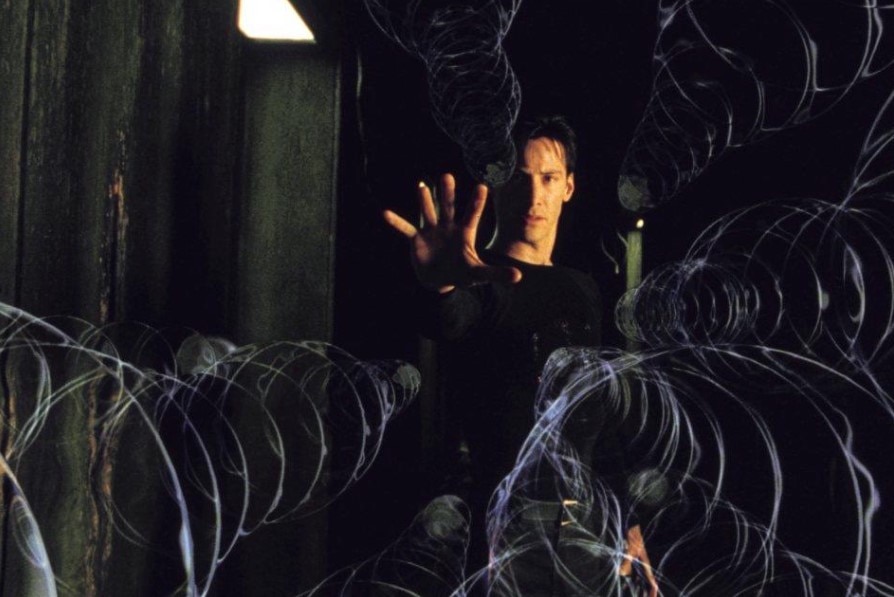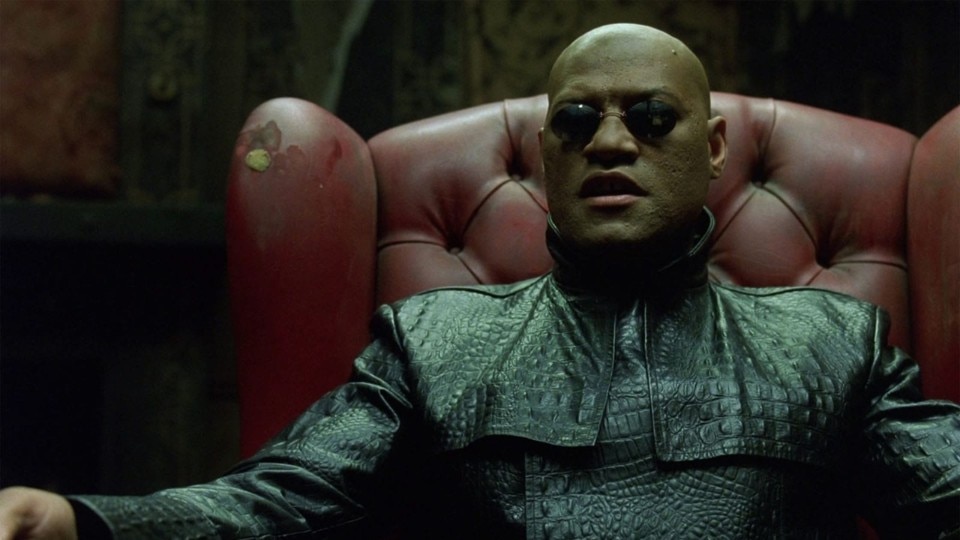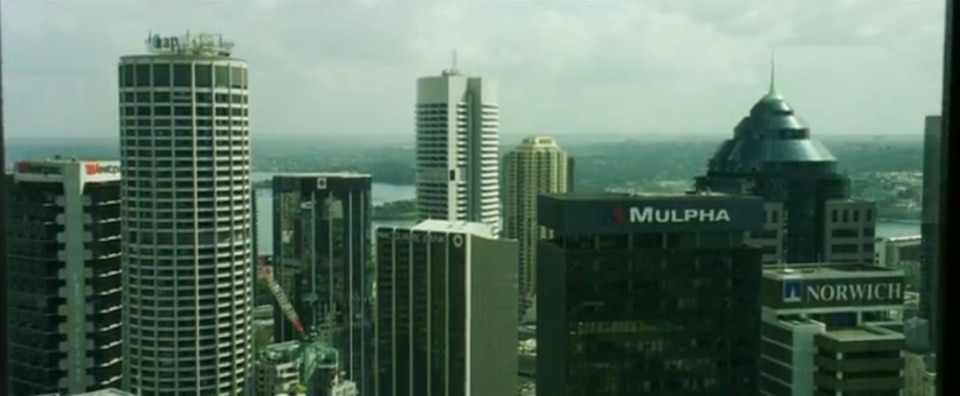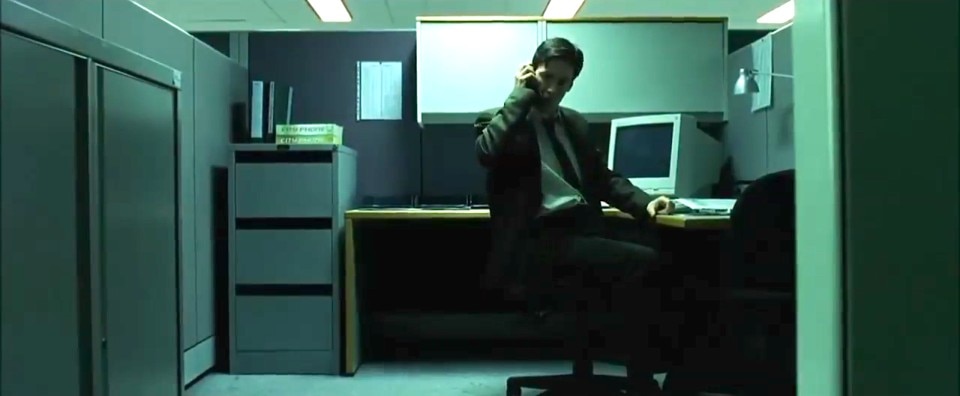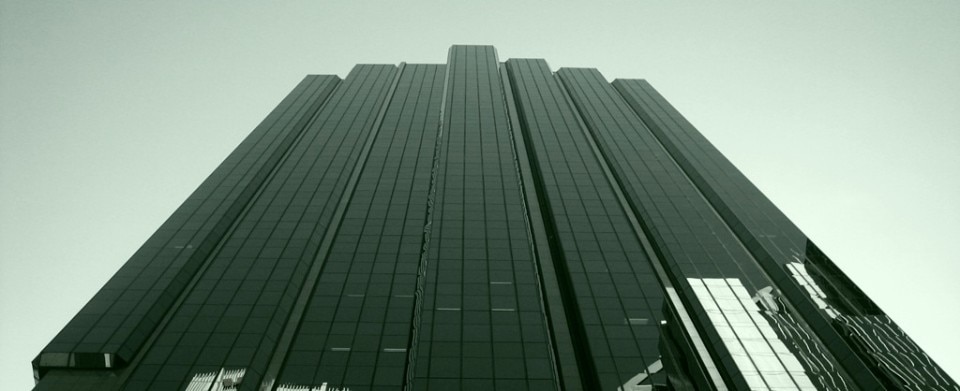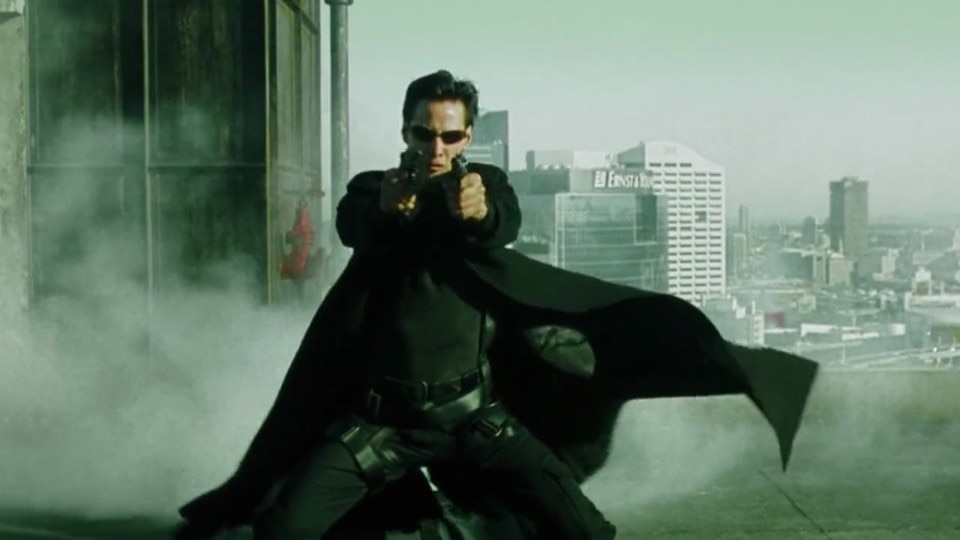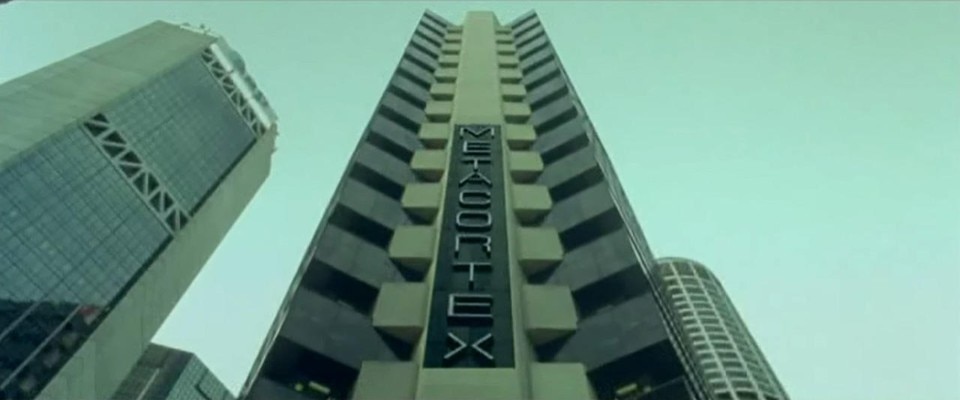Sisters Lana and Lily Wachowski had worked in the construction industry before coming to film and have a fascination for buildings. The film released 25 years ago, that revealed them to the world as filmmakers, The Matrix (and later its sequels), are among many things a tribute to the ability of cities, buildings, interiors and even just furniture to tell stories, to describe characters and a whole new fantasy world created from scratch. In that first film in 1999, there has been so much to explain, to tell and to say that not everything could be left to dialogues. Therefore, many aspects are presented through images, colours (the whole world of the Matrix turned green as the writings on the screens) and design.
In the story, a hacker discovers that he is living in a simulation, i.e., he discovers that the reality he thought he was living in is instead a world created by machines in a future where human beings are cultivated in order to extract the energy they need to work. A collective virtual reality in which millions of living beings live drab existences, not really knowing that they are attached to wires, sleeping inside pods through which they unknowingly provide energy. Once pulled out of the matrix, i.e., life in the virtual world, the protagonist Neo joins the rebels of the future and starts with them to enter and exit the simulation to fight the machines and end the slavery.

Therefore the world of fiction (the Matrix) is the depiction of the general outlines of slavery, and there is a very direct visual parallel between the concept of slavery and the design of that virtual world artfully created by machines (after some failures) to keep humans appeased and enslaved. It is a generic megalopolis, designed to be convincing to humans, that looks a lot like Sydney and Auckland because that is where the film was shot (you get a glimpse of the Sydney Tower, the UTS Building and St. James Station), but also like Chicago, the Wachowskis’ hometown. The dominant colour is grey and colours are rare.
It is the typical urban setting with buildings reminiscent of the style of the 1930s, 1940s and 1950s when the modern idea of the metropolis expanded. The simulation city of The Matrix and its sequels is therefore never really modern, it has nothing of the great Asian agglomerations (which today represent a standard for the idea of urban design of the future as Westworld shows). On the contrary it is a twentieth-century city, because it is about that kind of alienation and Marxist slavery that the film talks about in a subtle way. The individual blends into an anonymous mass in anonymous buildings. Late capitalism is the subterranean target of the critique.
What we are being told is a world created to enslave human beings, while what we see is the Western society of driven capitalism. Neo works in an unnamed company, in a cubicle as many others, furnished without personality, he is a link in a chain he does not know, he moves in aseptic spaces. The machines do not want humans to get any strange ideas, they want them to stay quiet, to sleep. Therefore, they simulate those power structures that, in the same way, give tastes of well-being without real satisfaction or real frustration.
The feeling of recleaning triumphs over everything. Something is already alluded to in the first film and then is confirmed in the following ones by the Architect (the supreme entity of The Matrix, a tribute by the Wachowskis to their work before filmmaking), namely that the first versions of the simulation did not work well, did not keep humans quiet because they were too perfect or too infernal. The one that works best, in which Neo lived, is the balance of trouble and unhappiness mixed with moments of satisfaction we know, only cleaned up. The immaculate and shiny surfaces, the streets without a scrap of paper, the lawns cut but without greenery (again, an aspect that today’s science fiction metropolises emphasise a lot), a triumph of mechanical aesthetics that communicates the absence of life.
The theoretical basis of that world is Jean Baudrillard’s Simulacra and Simulation, a book that theorises the saturation of signs and symbols in our society, which leads to a life full of simulacra that do not hide the truth but the absence of reality, symbols that no longer have a reference. All the actors and also several members of the crew had to read that book in order to work on the film. The film itself is full of simulacra, from the reality of the Matrix on down. The representation of our world in that film lives on symbols, from the mass consumption of fashion (which the film was a standard bearer of) to, for example, the use of Chesterfield chairs in the iconic scene of the blue pill and the red pill, when Neo has to choose between continuing to sleep or discovering the true reality by leaving the simulation.
Neo’s awakening in an unknown future is also a trauma for the spectators, at the time unaware of the film’s dual nature, who pass from a quiet and plausible world considered authentic (because it is so similar to ours), to one instead chilling, gloomy, made of machines with an animalistic design (insects and polyps), with the sun obscured and structures as the great plantation of humans, with an exasperated and inhuman functionalism.
How do we feel watching The Matrix every time Neo leaves the dystopian real world and re-enters the cleaned-up world of the simulation and returns to that metropolis between Sydney, Auckland and Chicago, made up of buildings and neat streets? Once we discover the simulation nature of those images, what does that architecture look like? And what does it look like after leaving the cinema when we come across parts, cities or areas that remind us of it?
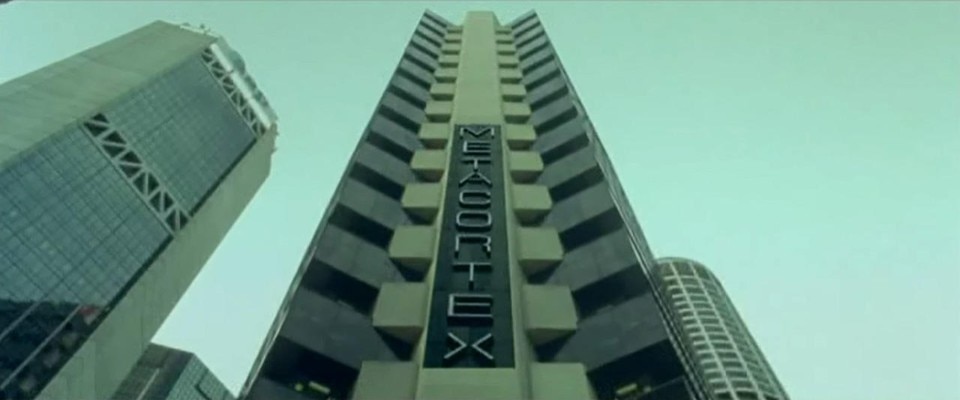
It is the ability of the best films to associate a new meaning to images that also populate real life, actually changing the feeling we associate to them. To put it emphatically and banally, they change the way we look at them, they actually give those signs more meaning and lead everyone to ask themselves one more unconscious question: is it like the machine-programmed reality I move through? Is my reality behind this calm so inhuman as well?
In the films of The Matrix saga, the only forms of rebellion, passion, perhaps love, come from scenes such as the rave in which Neo meets Trinity for the first time, the woman who will lead him to discover that he is living in a simulation. The raves are populated by people who believe that there is something more to the world of the Matrix, they are dirty and messy. They are not like the cubicle Neo works in during the day. It is again a form of aggregation, an interior design and a series of spaces that tell of a human issue.


